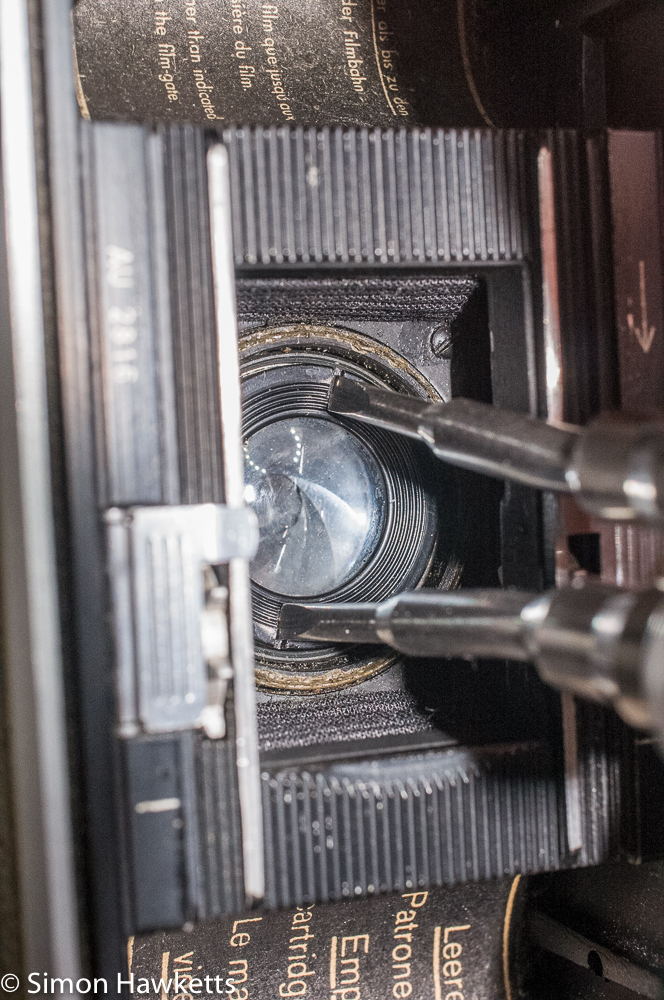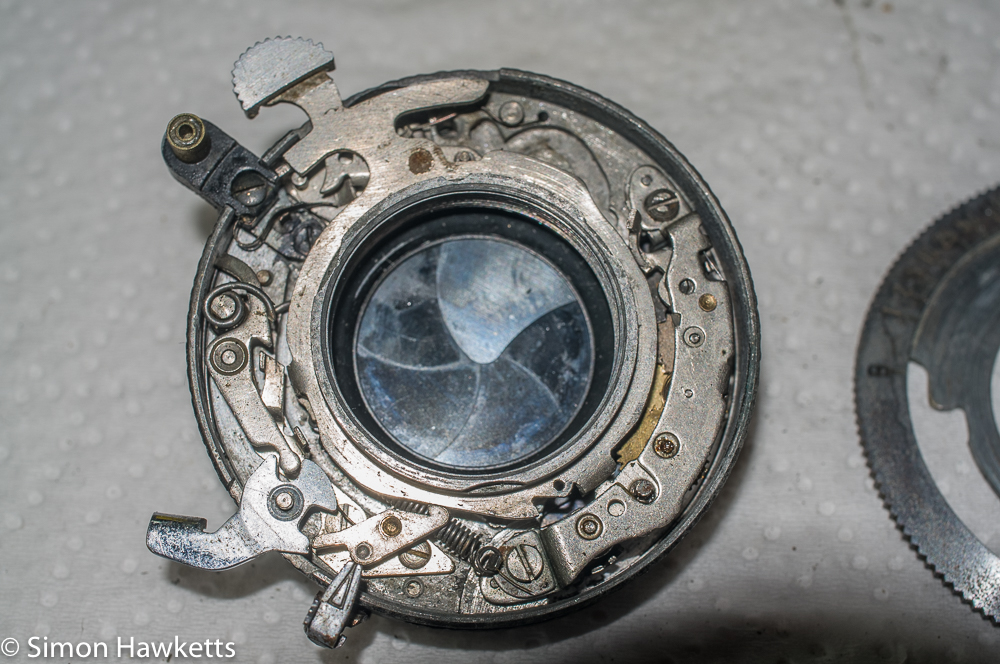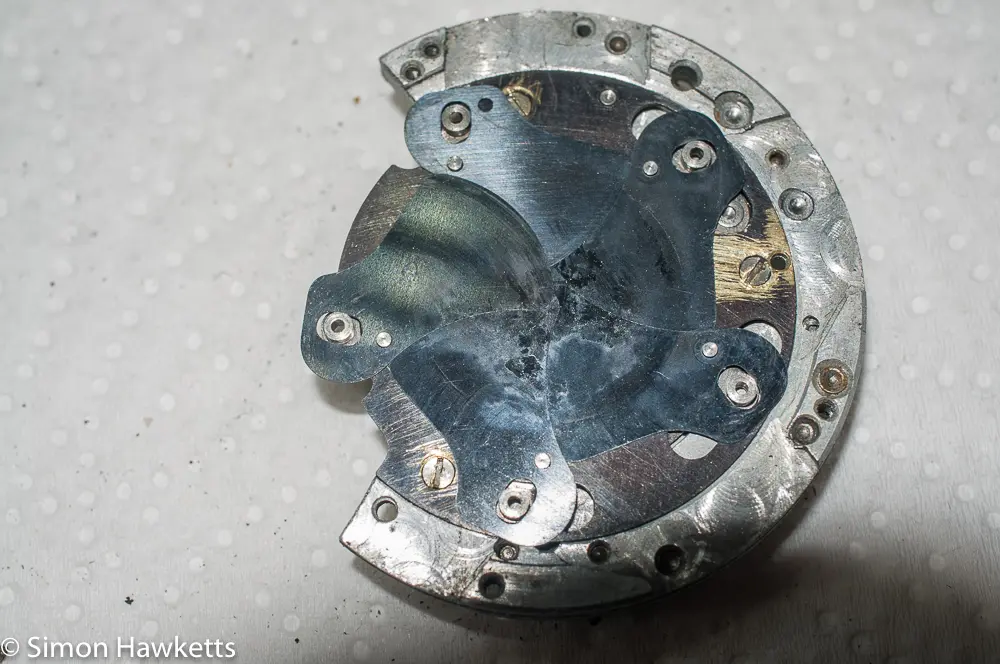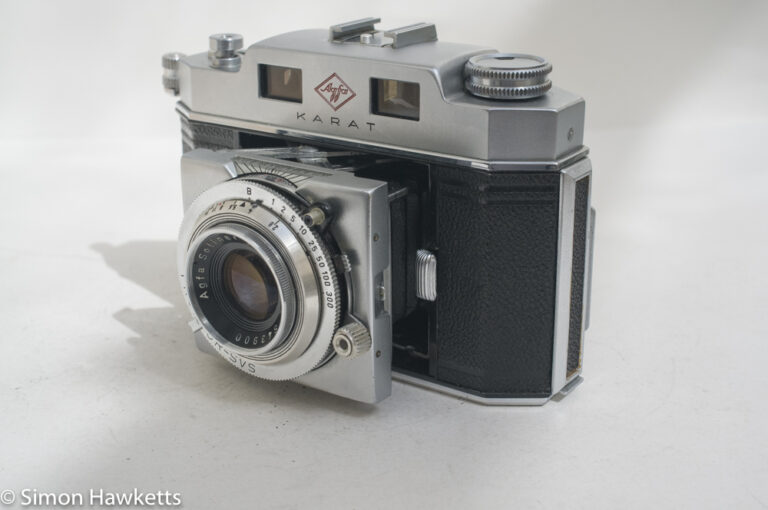Agfa Karat 12 Compur shutter clean up
This post describes the process I used to carry out a Compur shutter clean as the next part of my Agfa Karat 12 camera refurbishment.
Introduction
Having completed the easy part of my Agfa Karat 12 camera refurbishment with the film advance strip down and clean up, I then turned my attention to the next easiest part, which is the Compur-Rapid shutter fitted to this model.
As supplied, the shutter was very stiff to operate and only worked at one speed, irrespective of the shutter settings. It seemed the most likely problem was that the shutter needed a good clean out, and then it would probably be fine, this is how I did that.
Just for the record the serial no of the shutter is 6207300 and a glance at http://camera-wiki.org/wiki/Compur_serial_numbers told me that this shutter was made in 1948.
Pictures of the Compur Shutter Clean up process































Compur shutter clean up process
Getting the shutter off the camera involved removing the rear lens element using a lens spanner through the back of the camera, and then removing the ring which held the shutter into the front standard. Once the ring was removed, it turned out there was a screw holding the focusing actuator for the rangefinder onto the shutter assembly. To get to that screw, I had to remove the bellows from the front standard, which is done by removing 4 screws which attach it. You can get to those screws from the back of the camera also.
Once I got the shutter off the camera, the next problem was to remove the actual shutter mechanism, which had me stumped for a bit. After a bit of research I found that I had to remove the label on the front which said ‘Agfa Karat’ and that revealed a lock screw. Once the lock screw was turned so the plate was free, I could turn the front decorative plate, so it lifted off and revealed the shutter speed plate.
Stripping the shutter down was then a relatively simple operation; the pictures above show the basic process. The things to note are:
- When it comes to removing the shutter blades, they are not all the same – one of the blades has two locating holes rather than one.
- I didn’t actually take the aperture blades apart, since they were working well and looked clean. I just polished them up with some IPA on a cotton bud.
- It would probably be possible to clean the slow speed movement without removing it from the baseplate. The advantage of doing this is that the speeds will be right when the unit is re-assembled.
Once I got the unit completely stripped down, I cleaned it in IPA and applied a very small amount of grease to areas which move against the baseplate, like the shutter blade actuator and the B lever. The slow speed escapement was flushed through with IPA and actuated several times, immersed in the fluid to clean out all the old grease and dirt.
Each of the shutter blades were individually cleaned using a cotton bud soaked in solvent to remove all the old dirt. I made sure that I didn’t touch the blades at all, because that can transfer grease on to the blades from your fingers. Once it was clean, I added a tiny amount of watch oil onto the pivot points which the tiny cogs spin in.
Re-assembly is basically the opposite of dismantling the unit and the shutter is pretty simple which makes it relatively easy to work on. The only tricky part is getting the cocking ring refitted because you need to make sure it is pushed down far enough and all the levers and latches which need to interact with it are correctly set. For example, the latch which holds the shutter in place when cocked is very easy to get under the cocking ring rather than at the same level.
When the shutter is cleaned up and re-assembled, don’t try to cock the shutter until the speed setting ring is back on the shutter, otherwise the cocking ring is liable to jump out of place.
When I had the shutter re-assembled, I found there was a problem with the slowest speeds. On the bottom speeds, the shutter would open, and the escapement would run down, but the shutter wouldn’t close. After a lot of head scratching and trying to find what the problem was, I eventually found that a tiny sprung wire at one end of the escapement wasn’t correctly passing under a cog. Although it wouldn’t seem to make a difference, fitting the spring in the right place and carefully refitting the escapement and moving the position got the speeds working again.
Once the shutter was working, I then had to tackle the stiff focus adjustment before I could reassemble the camera.
Discover more from Everything Vintage
Subscribe to get the latest posts sent to your email.



